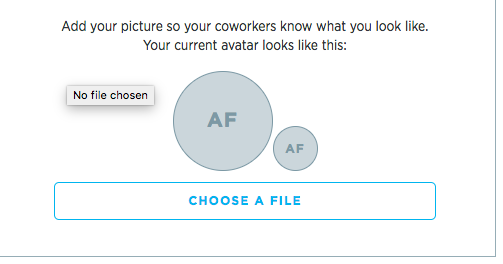An oral presentation can be a confusing and intimidating prospect. Often people are unclear as to what it actually is. An oral presentation is a verbal report or lecture or address about a particular topic or set of topics. It may include visual props, slides or video clips, but the bulk of the content is delivered from a speaker to an audience through words. It can be overwhelming to think of how to write an oral presentation, particularly if you've never done it before.
It can also be scary because an oral presentation requires you to speak as the center of attention for a period of at least a few minutes. Many people are afraid of public speaking, and the idea of having to give an oral presentation can cause a great deal of anxiety. However, with preparedness and practice, you'll find that writing an oral presentation is less frightening than it seems.
Oral vs. Written Presentations
Oral presentations are very different from written presentations. For one thing, the language you use in a written presentation, paper or article is significantly more formal than the kind of language that you'll use in an oral presentation. You'll want to make sure that your presentation is accessible to experts and non-experts, so unless they are absolutely necessary, you should take care to eliminate things like jargon, acronyms or insider terms that will make the presentation inaccessible to people who are not experts in your field. Oral presentations also require a connection and interaction with your audience. You'll need to lean heavily on your memory to be sure that you don't forget anything as you won't be reading off of a page. This is why writing an oral presentation requires significant practice and preparation.
Researching for an Oral Presentation
Before preparing your oral presentation you'll likely need to do a decent amount of research. Regardless of whether or not you've written extensively about the topic prior to preparing your oral presentation, research is still a critical piece of preparing. Research is necessary to ensure that the information you're going to be giving is accurate and to the point. You may feel that you're already an expert on the topic you're going to discuss, but there is always the chance that you could learn more, and that the knowledge you gain from some research can change your oral presentation for the better.
Oral presentations, unlike a written report, require that you're able to hold forth on your topic in a relaxed conversational manner. This means that by the time you're ready to give your oral presentation, you'll have become an authority on the subject. The best way to do this is to do extensive research on the topic and get familiar with any adjacent topics that might be relevant or related. First, do a search to get all of the necessary background information on the topic you're planning to focus your oral presentation around. Then see what other research into the area has been done. Is there research that contradicts the research you have already read? Are there sources you have not consulted yet that may have valuable information for you to consider?
Make sure that your research is thorough and extensive, to avoid missing important information about your topic. It's also a good idea to see if there are any video presentations available on similar topics. This way you can see how other people have dealt with your topic in this context before, and perhaps get some tips on what to include and what to leave, and possibly get some help with the format and structure of your presentation.
Preparing to Write an Oral Presentation
As you begin to prepare for your oral presentation, you'll want to keep the focus of your presentation firmly in mind. Having a focus or organizing principle will help you with one of the key pieces of preparing for an oral presentation: creating an outline. Another word for an organizing principle is a thesis statement. As with a paper or an article, the thesis statement is the main point that you're trying to make. If you're speaking about more than one topic in your oral presentation, you may have more than one thesis or one for each topic.
An outline will help you organize your thoughts and the flow of the presentation, so you can take listeners through information that may be very complex in a way that makes sense to them. Many people may find listening to a presentation of new material confusing or challenging, so something to keep in mind is clarity and simplicity. This is where an outline is helpful.
How to Write an Oral Presentation
Before beginning your outline, you'll want to get a rough list of everything you want to cover in your presentation. You can look for ideas by searching for an oral presentation example speech online or oral presentation tips for students. Make a list of bullet point topics that come to mind when you imagine the kinds of things you want to talk about. Then go back and cross out any points that are redundant and repetitious, and indicate if any points can be nested under a larger umbrella topic. Once you have a clear list of the items you want to discuss in your oral presentation, you can begin to create an outline.
The Importance of an Outline
An outline is a way to set up your oral presentation before you give it. This will help you structure the presentation and ensure that the information you're giving makes sense and has context. It's also a good idea to make an outline, so you can be sure that you don't leave out or forget any critical information during the course of your presentation. Armed with your list of bullet points, you're ready to begin to organize your presentation from beginning to end. An outline is a sort of like a map for your presentation. Where do you want to begin? What will be the conclusion?
Write down the topic you're planning to open with, then think logically about the sequence of points you want to make to follow it up. Figure out what the most natural flow is; in other words, find out where it makes sense to begin and where to go next. Paying attention to flow in your presentation is a key part of writing an oral presentation that will make sense to listeners. Jumping from topic to topic in a disjointed way can make your presentation confusing to the people listening. Try to make sure all the topics in your outline lead naturally from the one before it to the one after. The clearer your organizational method is, the better understood your oral presentation will be.
Outline Structure and Topic Sentences
Because you're not going to be reading the presentation, the outline can be written in a note format made up of topic sentences that will prompt you to begin discussing the topic, rather than reading a pre-written text. It's important to keep in mind that you aren't going to write out your entire oral presentation. Speaking to an audience is very different than reading to an audience. You don't want the people listening to your oral presentation to feel like they're hearing someone read a paper. Instead, make your presentation as conversational as you can. This requires mastery of the material and a clear outline.
Under each bullet point in your outline, write down any words, phrases or notes that will help you to remember the content for that particular part of the presentation. Build your whole outline this way, laying out the topic sentences at the heading of each section and using them as a jumping off point to start speaking about each one. Once you've arranged your list of bullet points in the order you plan to discuss them, you'll want to jot down the particular topic sentences and points you hope to make in each section. While you want to make sure that you include all the relevant topics in your oral report,
Practicing Your Oral Presentation
Once you have completed your outline, you're ready to do a "dry run" of your presentation. Starting at the beginning, give the oral presentation once all the way through. For the first dry run, do the presentation alone. See if it makes sense, if it feels clear and if you're able to move from topic to topic in a way that flows naturally and seems cohesive. If there are any problems, or if things seem unclear during the presentation, go back and revise your outline. If you find yourself stuck for things to say about a certain part of the outline, that's a sign that you need to go back and do more research on that particular topic to make sure that it all flows together without an issue.
Besides things like speaking slowly, clearly and with authority, a practice run is also to help you weed out unnecessary content in your oral presentation. Very often, people who are preparing for an oral presentation are most used to writing essays and reports and including background details that they feel are necessary or enlightening but may be excessive for an oral presentation.
Practice With an Audience
Once you've gotten your presentation tweaked to your liking, and you can perform it for yourself in a mirror with a feeling of confidence, it's time to bring in an audience. Ask one or two friends, family members or coworkers to help you with your oral presentation by listening to you run through it. After you've finished, ask them if it made sense, if you spoke clearly and if they had any questions. These topics are now very familiar to you, but they may not be familiar to your audience, so listen to their questions and feedback. They may be able to point out places where you need more information or need to be clearer.
Getting feedback from people unfamiliar with your topic is also a good way to find out what questions an audience may have that you hadn't yet thought of. This can be helpful for you in terms of rewriting your outline or rewriting your oral presentation altogether to make it clearer, easier to understand and thus a more effective presentation.
Practicing with an audience will also help you relax and talk about your topic in a more conversational and less stiff manner. Once you give your oral presentation to your audience, you may find that some of the things you wrote in your outline feel redundant or unnecessary. If that's the case, you should plan to revise and remove anything that you think doesn't serve your message. Once you've practiced a few times and feel that you've made all necessary adjustments, keep running through the presentation again, either alone or with an audience, to further help you remember the flow of the topics and guarantee that you won't need to read too much from your outline.
Related Articles
References
Resources
Tips
- Practice your oral presentation in front of a trusted colleague or loved one. Modify the content of your presentation and your delivery style as needed. Don't be afraid to rewrite entire note cards if necessary.
- Improvise during your oral presentation. Take cues from your audience. You do not have to follow your note cards to the letter.
- You can tell your presentation is going in the wrong direction when the people in the room start talking among themselves or eyes start wandering toward the window. If you see this happening, an immediate change in the direction of your presentation is necessary.
Writer Bio
Ashley Friedman is a freelance writer with experience writing about education for a variety of organizations and educational institutions as well as online media sites.











